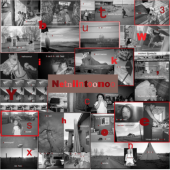Abstract: Using a mixed methodology, we followed the preparation of fifteen teacher candidates through a summer content immersion and schoolyard ecology field experience as part of their alternative route to teacher certification program. The primary purpose of our summer project was to support and learn from the funds of knowledge of the teacher candidates and migrant youth. Next we sought to determine if a learner-centered teaching, modeled in a content immersion that explored the inner life of cells, could be applied heuristically to co-plan and teach schoolyard ecology. The results suggest that a learner-centered teaching translates well between content and field immersions and can positively support the cultural and community wealth of both candidates and migrant youth while affirming and deepening our appreciation of the local natural world.
Continue Reading
While place and culture endure, place and culture both change. This paper focuses on
the ways this paradox has shaped the idea of “resilience” for the Northern Arapaho people, and
the ways in which we have used it to guide educational programs. We first introduce “place” and
what it means to the Northern Arapaho people. We then offer three examples of culturally
responsive place-based programs that involve photography and changing technology. Finally, we
discuss the Arapaho word teiitooniine’etii (to live quietly, live calmly) and suggest that in both
enduring values, and adaptation to new technologies and times, we find resilience as a people.